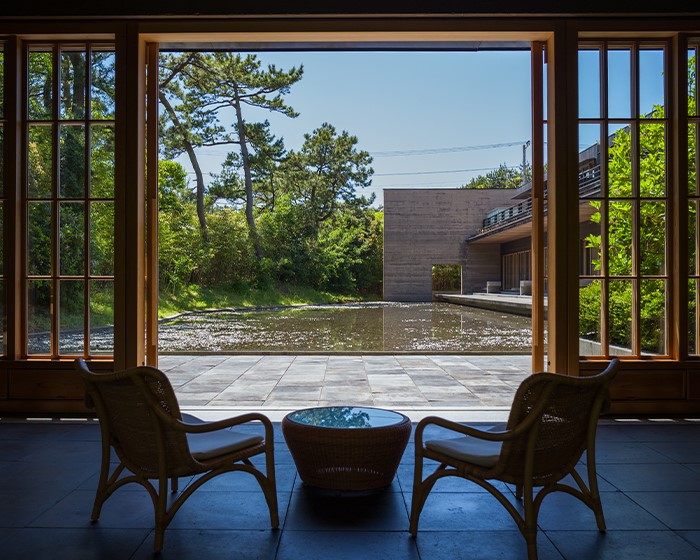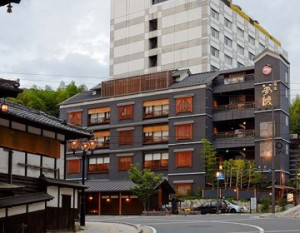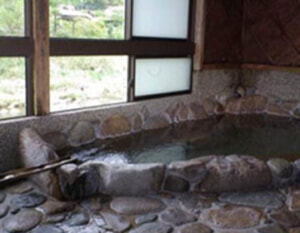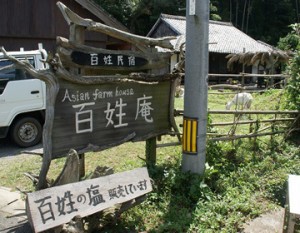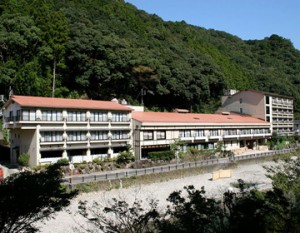Inn surrounded by the nature of Izu Peninsula
Numazu City, located in the eastern part of Shizuoka Prefecture, is just at the base of the Izu Peninsula. Surrounded by Mount Fuji, the highest mountain in Japan, and Suruga Bay, the deepest bay in Japan, Numazu is truly a treasure trove of nature. With a mild climate and sunny weather for more than half of the year, Numazu is also a famous tourist spot. A 10-minute drive from Numazu Station brings you to a quiet and peaceful place that makes it hard to believe that it was once an urban area. This is the Numazu Club, the best inn in Numazu.
It is said that in 1907, Zenbe Miwa, the second president of Mitsuwa Soap, leased about 3,000 tsubo of land from Numazu City and designed a beautiful building to hold tea ceremonies for a thousand people. In the fall of 2006, the aging building was renovated and a new wing designed by architect Akira Watanabe was added to the guesthouse to create the “Senbonmatsu Numazu Club The club was rebuilt as the “Senbonmatsu Numazu Club,” a members-only guesthouse.
The Japanese-style wing of Numazu Club, which has a long history, is registered as a Tangible Cultural Property of Japan, and is a fantastic space that fascinates with the skills of master craftsmen. The interior of the building is a showroom of master craftsmen’s techniques, with a variety of wood species, including Yakusugi cedar, combined to create beautiful patterns with unique carving marks, as well as traditional handcrafted finishes such as the “Naguri finish” and the “Ajiro ceiling” and “Korimen ceiling,” which are made of thin planks of wood woven together. It is currently used as a restaurant and library.


Luxurious time to enjoy Numazu to the fullest
The building facing the Japanese-style building is famous as Akira Watanabe’s last work. The exterior walls are constructed using a technique called “HANZUKURI,” which consists of piling up sand and soil from the Fuji River, and the design incorporates the expression of nature. The roofs are lined with Yoshino cedar, and the grainy cross sections visible from the eaves of the guest rooms are unforgettable. The craftsmanship found throughout the rooms is also not to be missed. Each of the eight guest rooms offers a rich variety, including a maisonette-type room with a bedroom on the second floor, a calm Japanese-style room with a small room on the first floor overlooking the water table, and a Western-style suite with a living room space and separate bed space and a private open-air bath. All of them are comfortable spaces where traditional Japanese tradition and modernity are fused together.
The meals, one of the pleasures of traveling, are modern courses based on Japanese cuisine, such as wagyu beef from Tochigi and fresh seafood directly shipped from Numazu Port, with an emphasis on the awareness of “Hashiri, Shun, and Mezore” (running, seasonal, and lasting). In the historical sukiya-style building, guests are invited to indulge in a variety of carefully selected seasonal dishes. Near the inn, you will find Senbonmatsu Park with its many black pines, a monument to Wakayama Makisui, and a literary monument to Inoue Yasushi. With the course map in hand, it is recommended to take a stroll in the sea breeze while taking a walk in the forest, and to touch the footsteps of the literary figures who loved Numazu so much. We hope you will return to Numazu, where you will find an exquisite inn that will heal both your body and soul.





